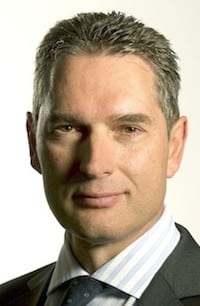
Sell-side banking and brokerage firms are raising the bar on operational excellence, a trend that began after the financial crisis. They are seeking to transform themselves along two dimensions: efficiency and profitability.
The Wall Street firms need to reinvest to maintain a captive customer base, said Marc Carletti, executive vice president of global banking & financial markets at BT Global Services.
“The way to do that is to find transformational programs, especially in terms of infrastructure and technology that will enable them to lower the cost base, be more efficient and decrease the level of internal error,” Carletti told Markets Media.
Other areas of focus for banks stemming from the financial crisis are risk, compliance and regulations. “It is eating a lot of the budget,” said Carletti. “They need to really balance their investments to be able to be compliant and make sure they are covered on one side, and on the other side to be able to invest long-term in technology and new products.”
Recent calls for a revamp of U.S. equity market structure include revisions to Regulation National Market Structure to require that trading venues that account for an insignificant share of consolidated average daily volume no longer be protected under the trade-through rule, and not share in any NMS plan market data revenue. This would result in more trading taking place on lit exchanges.
“We see a gradual move from ‘gray’ or non-regulated markets to more regulated markets, i.e. more to trading on stock exchanges,” said Carletti, who is based in New York. “That’s interesting for us because our unique community that interacts with our BT Radianz cloud is all about liquidity in the marketplace and electronic trading. So, the more regulation, the more volumes of that kind will go up, and we will continue to facilitate that.”

Marc Carletti, BT Global Services
Carletti foresees more inclination from investment banks to use a secure cloud. “They will use that type of infrastructure more than they did before, to find the right infrastructure at the right cost point,” he said. “You will see more aspects of capital markets infrastructure that were do-it-yourself, now being done more collaboratively.”
The BT Radianz financial cloud provides hosting and co-location services for all asset classes. In addition to enabling the transmission of financial market data in real time, it facilitates buy-side-to-sell-side straight-through processing.
“For example, when Deutsche Bank or UBS sets up a platform for online trading on forex, bonds or equities, this is the cloud that enables the connectivity,” said Carletti. “It enables the buy side to push orders to the sell side and trading venues. All the traffic between investment banks and market venues flows through the same BT Radianz cloud.”
From a technology and infrastructure point of view, the trend is looking at how to leverage common platforms and cloud technology more than before, so that investment banks can focus on their core business. In the past, banks had massive IT departments, ring-fenced from the rest of the bank. This has changed dramatically.
“They are looking at using [IT resources] in a more intelligent way,” said Carletti. “They tend to either out-source or look at partners who manage a service, so that the skills that they have are refocused into the real knowledge of the markets.”
He added, “Ten years ago, Morgan Stanley, Goldman, and UBS would be hugely proud about having created a fantastic trading software architecture. Now it is not the same, because they use their brains to really think about the market and what needs to be done with the market. So they pick the best software provider rather than developing it themselves.”
BT is building out the capacity of BT Radianz to go beyond providing connectivity to providing content and software applications as well. “We have the capacity to host applications,” said Carletti. “This will give flexibility to the market to use the network to transact and create a straight-through-processing solution and to co-locate.”
BT is also very strong in providing voice and video on top of its networks, Carletti said, noting that one out of three trading phone infrastructures is provided by BT. “We have enhanced our cloud to essentially also provide and transport voice and video,” he said. “As machine-to-machine trading continues to grow, the trader will be more focused on complex asset classes and interacting with the buy side in a different way.”
Featured image via Edelweiss/Dollar Photo Club





